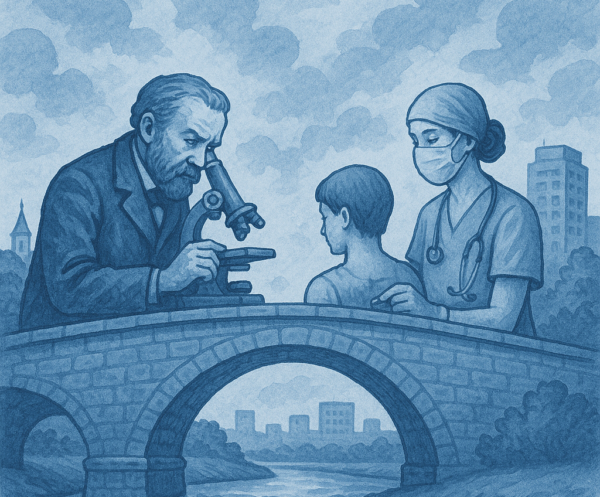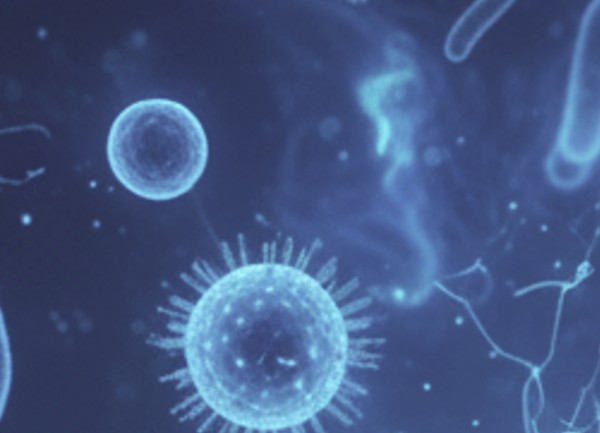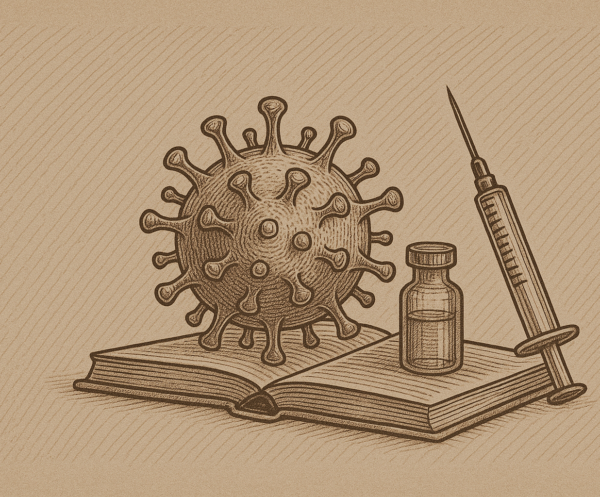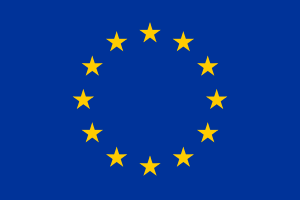This website uses cookies so that we can provide you with the best user experience possible. Cookie information is stored in your browser and performs functions such as recognising you when you return to our website and helping our team to understand which sections of the website you find most interesting and useful.
A Century-Long Tradition of Czech Immunology and Vaccination: From the Institute of Sera and Vaccines (ÚSOL) to AUMED, a.s.

The Beginnings and Establishment of the State Health Institute (SZÚ)
AUMED, a.s. is the proud successor to an almost century-long tradition of Czech immunobiological and vaccine research and production. Our know-how did not originate with our founding; it is an inherited and generationally-built legacy, with roots tracing back to the very beginnings of the Czechoslovak Republic.
The history of this legacy begins in 1918. The newly formed republic faced a fundamental challenge: building a sovereign public health system. A key part of this vision was, in the words of historical documents, “the issue of systematic development and production of strategic vaccination sera.” From the outset, this was not merely a commercial opportunity, but a strategic national interest that defined the mission we continue today.
Initial provisional solutions led to a 1920 resolution by the National Assembly, which mandated the government to ensure the establishment of the State Health Institute (SZÚ). To secure funding, the Rockefeller Foundation was contacted, which at the time was helping new states build their healthcare infrastructure. The foundation’s director, General Prof. Russell, personally decided that the provided funds—an astronomical sum of nearly CZK 27 million at the time—must be invested in laboratory capacities, not in administration.
This international investment, supplemented by a state contribution of CZK 25.7 million, enabled the purchase of extensive land in Prague’s Vinohrady district and the rapid construction of the complex, which was inaugurated on November 5, 1925. The SZÚ immediately ranked among the most modern institutes in Europe at the time.
A key figure of the early era was MUDr. Bohuslav Feierabend, “already an outstanding expert in immunobiology and a brilliant organizer” at the time. Under his leadership, production began even before the institute’s official opening. This head start allowed the institute to produce the first life-saving “anti-diphtheria and anti-tetanus sera” as early as 1926, just one year after launch.
The State Health Institute (SZÚ) expanded rapidly, and by 1933, it was producing 56 types of sera and vaccines (e.g., against tetanus, diphtheria, or scarlet fever) and 60 diagnostics, with the allergen department established the same year. As a top European workplace with a high reputation, it exported its products to Germany, Yugoslavia, and the Middle East. In the 1930s, the institute successfully produced anti-diphtheria serum and typhoid vaccines for the army. In 1938, production of a combined vaccine against diphtheria, scarlet fever, and whooping cough began. The quality control department was spun off from the institute and assigned to the newly established State Institute for Drug Control (SÚKL).
The War Period
After the occupation, the institute maintained a degree of autonomy thanks to its good pre-war professional relationships, especially with Behringwerke as its subcontractor. One of the goals during the war period was to maintain the ability to supply the civilian sector, despite growing pressure to shift production exclusively to supplying the Wehrmacht. During the war, the production of anti-tetanus serum and anti-diphtheria serum increased dramatically. It is worth noting that commercial production based on bacteriophages was already very active. For example, in April 1941, thousands of liters of bacteriophages against dysentery were prepared for the Wehrmacht.
The Establishment of the Institute of Sera and Vaccines (ÚSOL)
After the war, the best solution for immunobiological production proved to be the establishment of the national enterprise Biogena, which the Ministry of Health founded on February 14, 1950, thus definitively separating production from state drug control. The field’s development was also aided by its strategic importance for the country’s defense, leading to the creation of other facilities like the penicillin plant in Roztoky and Velaz for laboratory animals. Due to the long-term lack of space, which the company had felt since the 1930s, the former Orion chocolate factory complex in Prague 10 was acquired for the new Biogena enterprise, and MUDr. Jiří Málek became its first director. As early as 1951, a decision was made to build a duplicate production facility in Slovakia, and so Biogena built the Imuna enterprise in Šarišské Michalany, established on January 1, 1953, which was among the best-equipped in Europe.
In 1958, another reorganization followed, establishing the Institute of Sera and Vaccines (ÚSOL), which now included both Biogena and Imuna. At this time, the blood derivatives department, led by Dr. Zdeněk Foukal, began to achieve an outstanding level.
Other significant figures at the institute included primarily Assoc. Prof. MUDr. Dimitrij Slonim, known as the “father of Czechoslovak vaccines,” and MUDr. Jan Pekárek, creator of the immunomodulator Immodin and a successful whooping cough vaccine.
Assoc. Prof. Slonim’s team, in 1959–1960, was the first in the world to continuously produce and massively apply the oral live poliomyelitis vaccine. This campaign led to the complete eradication of polio in Czechoslovakia starting in 1960. Slonim’s pioneering experience was key in developing the WHO’s first requirements for the production of this vaccine, and he later chaired the Czech National Commission for Polio Eradication Certification.
Slonim’s team was also among the four countries in the world (1965–1966) that developed a lyophilized live smallpox vaccine, which met the strict WHO requirements for stability and efficacy. This vaccine, rated as one of the five best in the world, was used in the global eradication program (concluded in 1977), and Slonim again participated in creating WHO standards. He also contributed to the development of vaccines against measles and mumps, leading to their elimination or significant reduction in the Czech Republic, and was nominated for the title Knight of the Czech Medical Order for his merits.
In the 1980s, MUDr. Jan Pekárek’s team focused on cellular immunity research and the preparation of immunomodulators. In collaboration with academic institutions, he developed a preparation that was registered in 1989 as Transfer Factor SEVAC. This product, intended to boost the body’s immune capabilities, was later renamed IMMODIN and converted into a more stable lyophilized form.
In addition, other vaccines were developed by the institute. From the mid-1960s until 1982, a lyophilized rabies vaccine from sheep brains was produced. A measles vaccine (MOVIVAC) was also developed, which became mandatory in 1969, and a mumps vaccine (PAVIVAC). From 1987, their combination, MOPAVAC, prepared on dog kidney cells, was used. In 1994, this vaccine was replaced by the trivaccine TRIVIVAC (measles, mumps, rubella), developed by the successor company Sevapharma.

Privatization and the Emergence of Sevac and Sevapharma
After 1989, there was a long debate about the future of immunobiological production in the Czech Republic. A crucial step occurred in 1994 when the original Institute of Sera and Vaccines (ÚSOL) was transformed into the joint-stock company Sevac, a.s. Subsequently, in 1995, it was decided to split the company: Sevac, a.s. would focus on blood plasma processing, while the production of vaccines and related products was spun off into the newly founded company SEVAPHARMA, a.s. in 1997. At this point, the paths of the two companies diverged significantly.
The first part, SEVAC, a.s., was to focus on blood plasma and was building a new center in Bohumil with a large state investment (CZK 800 million). However, the government halted the project in 2000, and the complex was sold for a fraction of the price (CZK 112 million). After a series of owners, including Baxter and Praha Vaccines, the complex ended up with the American company Novavax.
Sevapharma, a.s. was sold to Bioveta in 1999. In 2004, it was bought by the developer Sekyra Group, which kept the lucrative land in Vinohrady (where it built the Rezidence Korunní, the former “Orionka”) and sold the company itself, without real estate, to the Slovak Imuna Pharm in 2006.
At that time, Sevapharma still had a huge portfolio: bacterial vaccines (ALTEANA – against tetanus, ALDITEANA – divaccine against tetanus and diphtheria, and ALDITEPERA – trivaccine against tetanus, diphtheria, and pertussis) and viral vaccines (MOVIVAC – live monovaccine against measles, PAVIVAC – live monovaccine against mumps, MOPAVAC – divaccine against measles and mumps, TRIVIVAC – live trivaccine against measles, mumps, and rubella), allergens – diagnostic and hyposensitization (pollen, mite, mold, and insect venom), Immodin – for treating immunodeficiencies, a very wide range of immunochemical and microbial diagnostics. The complementary range included preparations STAFAL, POLYSTAFANA, enzymes Hyaluronidase and Collagenase, media, buffers, laboratory agars, bacterial lysates, and heteroglobulins Gasea and Bosea – for treating gas gangrene and botulism. It should also be noted that the TRIVIVAC vaccine was also accepted by UNICEF and PAHO for mass vaccination campaigns.
Subsequently, in 2009, the company established a contractual relationship with VÚAB in Roztoky u Prahy, where it leased space and, in 2010–2011, built its own production capacities. The company focused on three key areas: allergens, the Immodin preparation, and bacterial and viral vaccines (TRIVIVAC and PAVIVAC), striving to maintain its position on domestic and export markets. The preparation containing bacteriophages, STAFAL, continued to be a complementary product.
The Demise of Sevapharma and the Transfer of Know-How to AUMED, a.s.
The further development of Sevapharma, a.s. was negatively affected by owner interventions in management, which eventually led to insolvency and subsequent bankruptcy. This fall did not stem from scientific failure, but from managerial failure. At this critical moment, it was crucial not to let a nearly century-old national scientific treasure—unique know-how and its bearers—perish. AUMED, a.s., under the leadership of RNDr. Juraj Vronka (then the sole shareholder), therefore decided to build on this tradition. The priority was to prevent the disintegration of the specialized teams that were the custodians of knowledge in vaccines, bacterial preparations, bacteriophages, and immunomodulators. AUMED thus became the new home for the key employees who carry this legacy forward.
Therefore, in 2017, AUMED, a.s. embarked on two key projects: “Transfer factor – development and research of a new dosage form of an immunotherapeutic medicinal product and control methods demonstrating immunomodulatory potential” and the project “Research and development of a new vaccine against whooping cough.” Both projects referenced the tradition of MUDr. Pekárek’s research in cellular immunity and bacterial vaccines. The projects were successfully completed and initiated further development and direction for AUMED, a.s.
Currently, in the field of bacterial vaccines, we are building on the results of previous projects. We aim to develop an easily applicable immunization preparation for inducing mucosal immunity against B. pertussis infection. The goal is to develop a preparation that allows for easy, safe, and widespread administration of a booster dose in a suitable non-invasive application form—a mucoadhesive tablet. This would be repeatedly placed in the oral cavity to induce group mucosal immunity against pertussis. We are also developing a new vaccine against Staphylococcus aureus based on exogenous anatoxins as active ingredients.
In the field of cellular immunity, we have developed a new medicinal product containing human transfer factor as the active substance in the form of an oral lyophilized tablet. In 2022, we founded the subsidiary AUMED Immunology a.s., whose goal is to register and bring to market this new medicinal product, which emerged from the tradition of the Immodin preparation.
Last but not least, our tradition includes deep expertise in bacteriophage production, dating back to the 1940s and including later products like Stafal. Today, we are modernizing this historical knowledge. AUMED is among the first companies to successfully incorporate bacteriophages into cosmetic products (dermatocosmetics Phage Glow). We are thus using our unique expertise to solve modern problems such as acne, eczema, or growing antibiotic resistance.
AUMED, a.s. is thus successfully leveraging this inherited, generationally-built know-how to address the most pressing health challenges of the 21st century. Our current research and development projects are direct proof of this unbroken continuity.







